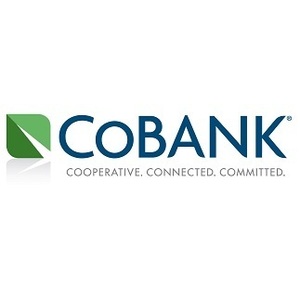CoBank report discusses biofuel policy uncertainty

July 14, 2025
BY Erin Krueger
CoBank’s latest quarterly research report, released July 10, highlights current uncertainty around the implementation of three biofuel policies, including Renewable Fuel Standard renewable volume obligations (RVOs), small refinery exemptions (SREs) and the 45Z clean fuels production tax credit.
The report calls the three policy matters “the three legs that will be balancing the biofuels industry as the year progresses,” noting that uncertainty regarding the implementation of each of the three policies “will greatly impact overall supply and demand.”
The EPA’s proposed rule to set 2026 and 2027 RFS RVOs includes provisions that would create a fundamental change in the RFS program by reducing the number of renewable identification numbers (RINs) generated for each gallon of fuel made from imported feedstocks by 50%. The proposed rule also includes strong RVOs for biomass-based diesel. As a result, CoBank predicts that the use of domestically produced soybean oil feedstock will increase significantly.
Biofuel production has been down during the first half of the year. If RIN generation does not pick up during the second half of 2025, CoBank predicts the market will be short nearly 2 billion RINs. That shortfall doesn’t account for the impact of SREs. Some clarity should be available this fall, as CoBank notes the EPA has signaled its intent to issue decisions on outstanding SREs and promulgate a final RFS rulemaking by the end of October.
Advertisement
Advertisement
CoBank also discussed the potential impact of the 45Z credit, which was altered and extended as part of the One Big Beautiful Bill signed by President Donald Trump on July 4. The bill extended the credit through the end of 2029, lowered the maximum value of the credit from $1.75 to $1 per gallon for sustainable aviation fuel (SAF), limited the applicability of the credit to fuels made from feedstocks produced or grown in the U.S., Mexico and Canada, and excluded indirect land use change (ILUC) from carbon intensity (CI) calculations. According to CoBank, initial guidance issued in January has allowed some biofuel producers to start monetizing the 45Z credit, but has not created enough margin improvement to offset the elimination of the $1 blender’s tax credit.
A full copy of the report is available on CoBank’s website.
Advertisement
Advertisement
Related Stories
CountryMark on July 22 celebrated the completion of more than $100 million in upgrades at its refinery in Indiana, including those related to soybean oil storage. The facility produces renewable diesel via coprocessing technology.
ATOBA Energy and Air Moana are partnering to implement scalable solutions for the supply of SAF. The collaboration aims to ensure long-term SAF availability while supporting local initiatives to develop sustainable fuel production in Tahiti.
While final IRS guidance is still pending, the foundation of the 45Z program is well defined. Clean fuel producers should no longer be waiting; they can now move forward with critical planning and preparation, according to EcoEngineers.
Neste Corp. on July 24 released second quarter results, reporting record quarterly renewable product sales volumes despite weaker margins. SAF sales were up nearly 80% when compared to the first quarter of 2025.
Valero Energy Corp. on July 24 released second quarter results, reporting a profitable three-month period for its ethanol segment. The renewable diesel segment posted a loss, but the company’s new sustainable aviation fuel (SAF) unit operated well.
Upcoming Events










